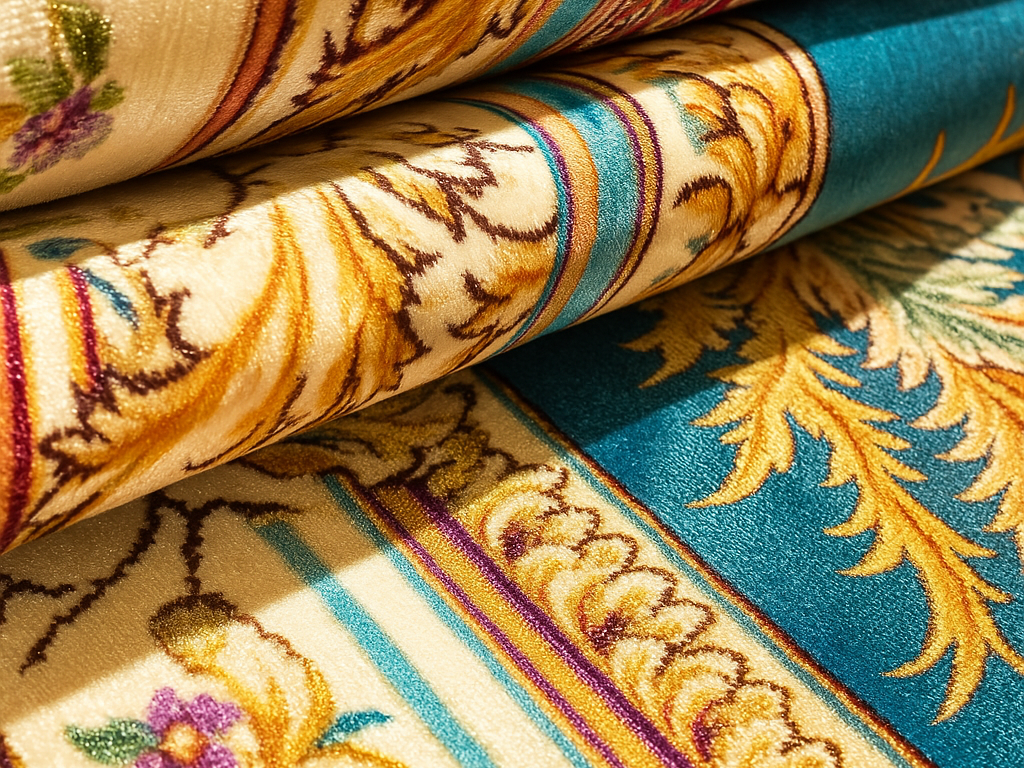Curiosidad por moqueta sintética-y por qué se ha convertido en la opción preferida de muchos hogares y empresas? No es usted el único. Las moquetas sintéticas combinan asequibilidad, alto rendimiento y flexibilidad de diseño de un modo que las fibras naturales simplemente no pueden igualar. Pero, ¿de qué están hechas exactamente? ¿Y son realmente las más adecuadas para su espacio?
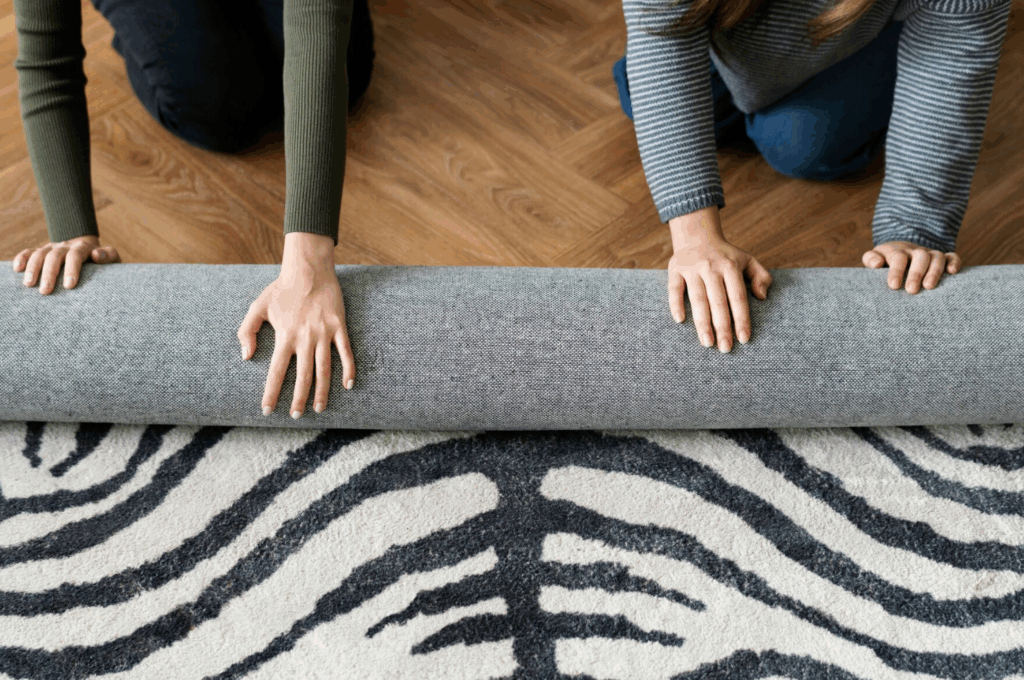
En esta guía te explicamos todo: desde las fibras sintéticas más comunes, como el nailon, el poliéster, la olefina y la triexta, hasta cómo se fabrican, cómo se comparan y cómo se cuidan. También obtendrá información clara sobre cuestiones medioambientales, cómo comprar de forma inteligente y cómo elegir entre opciones sintéticas y naturales. ¿Listo para explorar? Empecemos.
1. ¿Qué es una alfombra sintética?
A moqueta sintética se refiere a los revestimientos de suelo fabricados con fibras artificiales en lugar de materiales naturales como lana o algodón. Desarrolladas para tener el mismo aspecto, tacto y funcionalidad que las alfombras tradicionales, pero a un coste inferior, las alfombras sintéticas dominan el mercado hoy en día. De hecho, más de 90% de la producción de alfombras utiliza fibras sintéticas como nylonpoliéster, olefina y triexta. Estas fibras, fabricadas a partir de productos petroquímicos o polímeros biológicos avanzados, pretenden combinar comodidad y durabilidad, y lo consiguen con notable éxito.
Las primeras fibras sintéticas surgieron en el siglo XX para abordar las limitaciones de las fibras naturales: coste, disponibilidad, uniformidad del color y resistencia a las plagas y al moho. En la actualidad, estas moquetas se utilizan en hogares, oficinas, espacios comerciales, propiedades de alquiler e incluso en exteriores, y son muy apreciadas por su asequibilidad, versatilidad y bajo mantenimiento.
2. Las fibras sintéticas más comunes
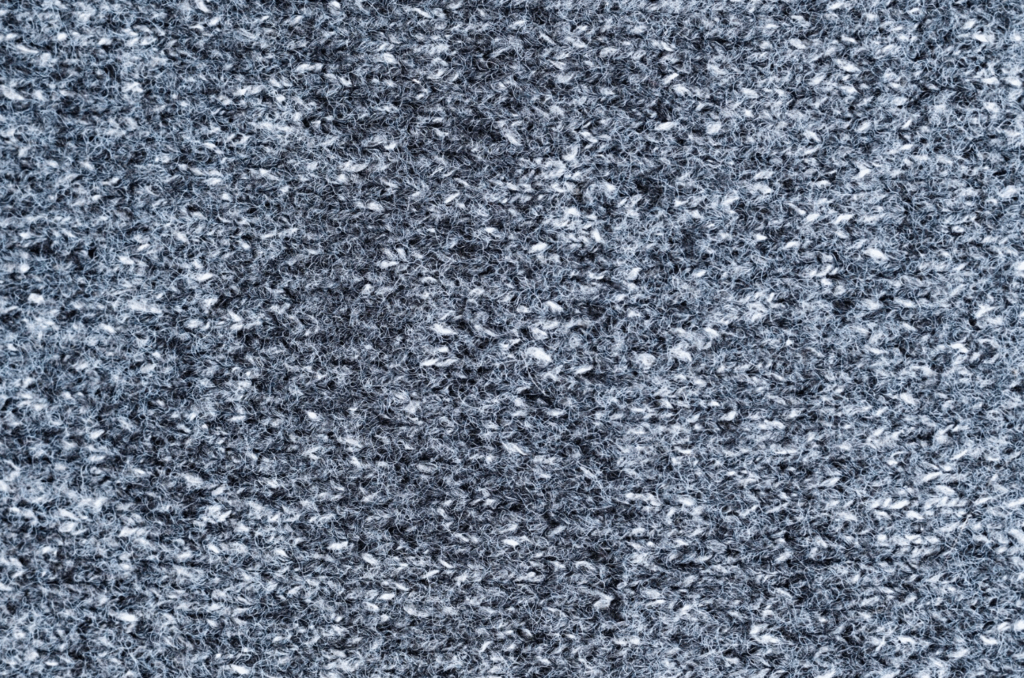
Desglosemos las fibras sintéticas más utilizadas en la fabricación de alfombras:
- Nylon: La fibra de moqueta más utilizada. Conocida por su excepcional fuerza, elasticidad y resistencia al desgaste, es ideal para zonas de mucho tránsito, como escaleras y salones.
- Poliéster (PET): Valorado por la reproducción de colores vibrantes y su suavidad. Naturalmente hidrófobo, resiste las manchas de base acuosa pero puede aplastarse con el tiempo.
- Olefina (polipropileno): Barato y excelente para resistir las manchas, el moho y la luz solar. Ideal para zonas poco transitadas o propensas a la humedad.
- Triexta (PTT, Sorona, Smartstrand): Una nueva variante de poliéster de base biológica. Ofrece resistencia natural a las manchas y suavidad, y puede incluir hasta ~37% de contenido renovable.
- Acrílico: Imita el aspecto y el tacto de la lana. Resistente a la humedad y no destiñe, pero menos duradero que el nailon o el poliéster.
3. Papel de los materiales: Comparación de fibras sintéticas
Cada fibra sintética aporta rasgos distintivos:
| Fibra | Durabilidad | Resistencia a las manchas | Sensación y aspecto | Lo mejor para | Consideraciones |
| Nylon | Excelente | Bueno (tratado) | Resistente, colorea bien | Pasillos, escaleras, habitaciones familiares | Más caro que otros sintéticos |
| Polipropileno / Olefina | Bien | Excelente (hidrófobo) | Suave, menos resistente al aplastamiento | Sótanos, exteriores, instalaciones económicas | Manchas de aceite difíciles; menos resistente a la decoloración |
| Poliéster | Feria | Excelente | Felpa, vibrante | Viviendas de tráfico medio | Propenso a la estera, menos duradero |
| Triexta | Bueno (emergente) | Excelente | Suave, respetuoso con el medio ambiente | Cocinas para niños, estampados | Menos probado a largo plazo que el nailon |
| Acrílico | Feria | Bien | Similar a la lana, resistente a la humedad | Zonas decorativas poco transitadas | Problemas de pigmentación, problemas de pilling |
Durabilidad y tráfico: El nylon destaca por su gran resistencia, lo que lo hace ideal para zonas muy transitadas. Triexta proporciona durabilidad con protección antimanchas incorporada.
Protección antimanchas: La olefina es excelente para las salpicaduras de líquidos, mientras que el poliéster resiste las manchas de agua, pero tiene problemas con las de aceite.
Sensación y comodidad: El poliéster y la triexta ofrecen un confort afelpado; la olefina es más firme bajo los pies.
Implicaciones económicas: La olefina y el poliéster básico son económicos. El nailon y la triexta se sitúan en la gama media, con unas prestaciones que justifican su precio.
Lectura relacionada: Explicación del proceso de fabricación de las alfombras de nailon impresas
4. Por qué son importantes las alfombras sintéticas y a quién van dirigidas
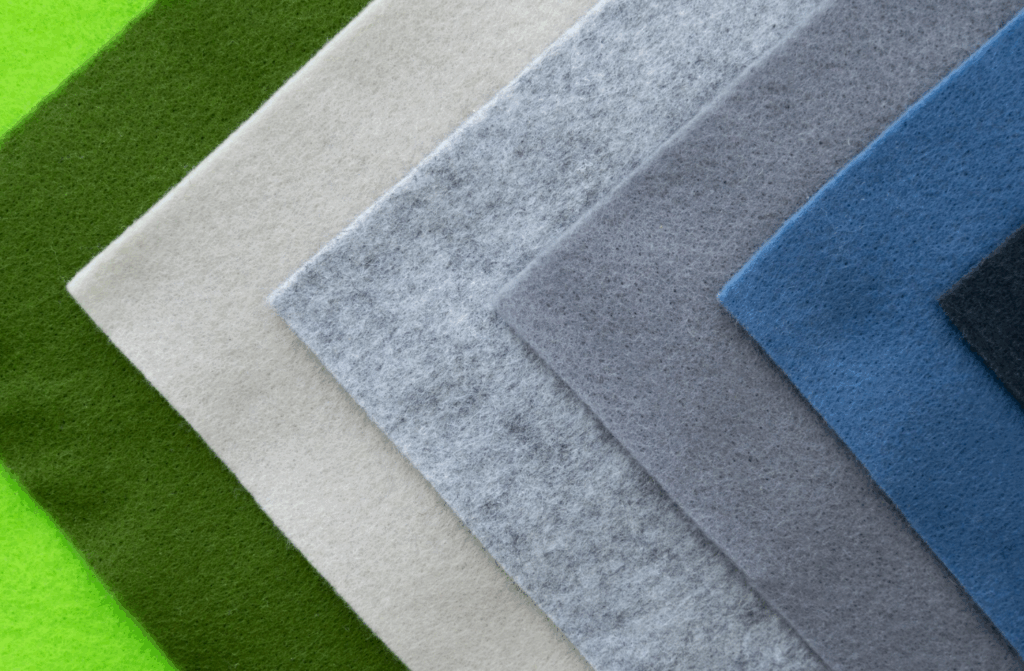
Las moquetas sintéticas no sólo son populares, sino que dominan el mercado de los suelos. ¿Por qué? Logran un raro equilibrio entre rendimiento, asequibilidad y variedad de diseños.
- Practicidad y rendimiento: Las fibras sintéticas están diseñadas con un propósito. La resistencia y elasticidad del nailon lo convierten en la mejor opción para zonas de mucho tránsito; el poliéster y la olefina resisten las manchas, la humedad y la decoloración. De hecho, más de 90% de la producción de moquetas comerciales se basa en fibras sintéticas como el nailon y el polipropileno debido a su consistencia. durabilidad.
- Fabricación rentable: Estos materiales son mucho más baratos de producir que las fibras naturales -como la lana-, lo que significa que los propietarios de viviendas pueden instalar moquetas más ampliamente, sobre todo después de que las sintéticas hicieran asequibles las moquetas en la década de 1950.
- Libertad de diseño: Las fibras sintéticas pueden teñirse de colores vivos o tejerse en prácticamente cualquier textura, desde la felpa sedosa al bucle rugoso. Esta versatilidad las hace ideales para coordinar con interiores modernos.
Quién se beneficia más de las alfombras sintéticas
La moqueta sintética no es una solución única, pero satisface las necesidades de un amplio abanico de usuarios:
- Familias ocupadas y dueños de mascotas Los niños, las mascotas y los derrames van de la mano. Las opciones sintéticas como el poliéster (con una resistencia excepcional a las manchas) o la olefina (resistente a la humedad, teñida en masa) facilitan la limpieza y ayudan a reducir los daños permanentes de los accidentes cotidianos.
- Espacios comerciales muy transitados Las oficinas, los vestíbulos y las tiendas necesitan moquetas que soporten las pisadas diarias. El nailon, gracias a su gran resistencia a la abrasión y su elasticidad, es el material preferido en estos entornos.
- Compradores e inquilinos con presupuesto ajustado La moqueta sintética es mucho más barata que la de lana y más fácil de sustituir. Es práctica para quienes desean un suelo cómodo sin tener que invertir.
- Sótanos, exteriores y ambientes húmedos La olefina (polipropileno) resiste la humedad y el moho y repele de forma natural las manchas de agua. Por eso es perfecta para sótanos, alfombras de exterior o suelos que puedan humedecerse.
- Personas preocupadas por la salud y el medio ambiente Las fibras sintéticas más recientes, como la triexta, incorporan hasta 37% de glucosa de maíz renovable y tienen bajas emisiones de COV. Ofrece una alternativa más sostenible con certificaciones ecológicas.
- Entusiastas del diseño Si busca una paleta de colores específica o una textura concreta, los sintéticos ofrecen una enorme variedad de estilos, con resultados fiables en todo momento.
Lectura relacionada: Cómo las alfombras de nailon impresas están revolucionando el sector de los suelos
5. Los pros y los contras de Alfombras sintéticas: Desglose rápido
A la hora de buscar opciones de suelos, las moquetas sintéticas destacan por varias razones de peso. Sin embargo, también tienen sus contrapartidas. He aquí un análisis refinado que equilibra claridad y riqueza.
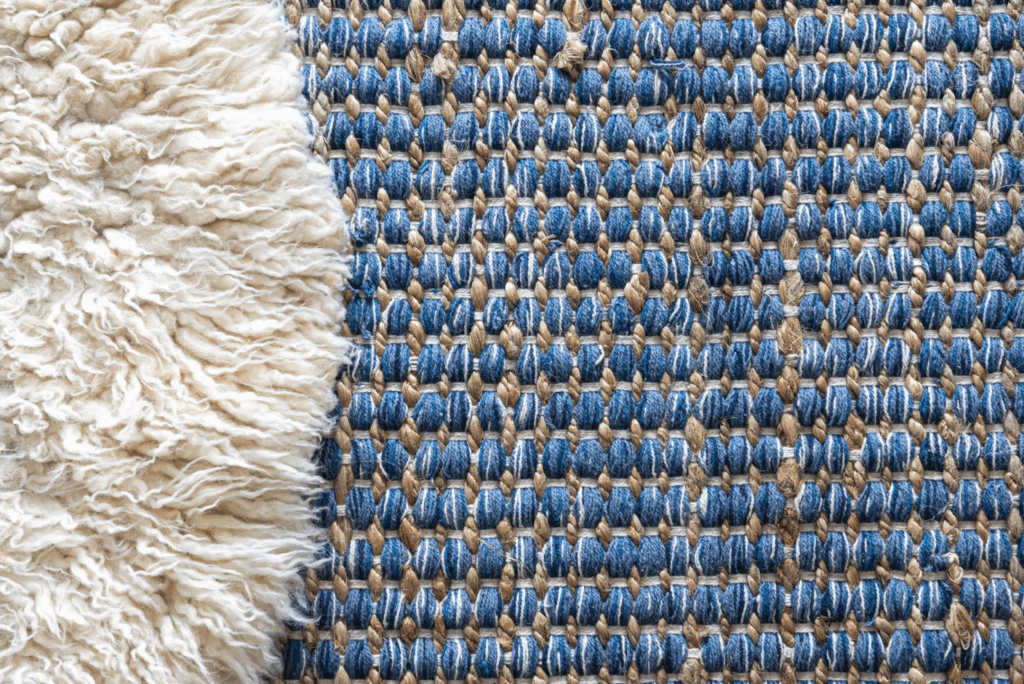
PROS de las alfombras sintéticas
Confort asequible
Las alfombras sintéticas son siempre más asequibles que las opciones naturales como la lana. Por ejemplo, las moquetas de poliéster suelen oscilar entre $1-3 por pie², mientras que las de nailon pueden alcanzar $3-12 por pie², lo que refleja su ventaja en rendimiento. Esta ventaja de coste las hace ideales para habitaciones grandes, alquileres o remodelaciones de bajo presupuesto.
Durabilidad y resistencia
- Nylon es líder en cuanto a longevidad: resiste la abrasión, conserva la forma con el tráfico peatonal y es fundamental en muchos espacios de alto rendimiento.
- Triexta (una nueva fibra similar al poliéster) añade resistencia natural a las manchas y suavidad, con garantías que rivalizan con las del nailon.
- Incluso poliéster y olefina mostrar una sólida resistencia en el contexto adecuado, como estilos en bucle o habitaciones secundarias.
Resistente a las manchas y al agua
- Poliéster resiste las manchas de agua sin esfuerzo y es hidrófoba por naturaleza.
- Olefina (polipropileno), especialmente cuando se tiñe en disolución, repele la humedad, el moho y la lejía.
- Triexta va más allá: su composición molecular resiste las manchas y la suciedad sin necesidad de tratamientos adicionales.
- Nylonaunque duradero, suele necesitar una protección antimanchas añadida para mantenerse.
Versatilidad de estilos
Las fibras sintéticas son extremadamente adaptables. Puede conseguirlas en cualquier color imaginable -desde sólidos brillantes a neutros tenues- y en diversas texturas, desde bereberes de bucles apretados a saxony afelpado o frisos texturizados.
Resistencia a los alérgenos y bajo mantenimiento
A diferencia de las fibras naturales, las sintéticas no atraen a las polillas ni albergan alérgenos como la lana. Son resistentes al moho y a la acumulación de polvo, y suele bastar con pasarles la aspiradora o limpiarlas con regularidad.
Eco-Progreso en marcha
Algunas fibras están adquiriendo credenciales ecológicas:
- Poliéster PET reciclado se fabrica con botellas de plástico.
- Triexta puede incluir hasta 37% de azúcar de maíz renovable y emite menos COV.
CONS de las alfombras sintéticas
Huella medioambiental
Las raíces petroquímicas y la fabricación intensiva en energía empujan a los sintéticos hacia una fuerte huella de carbono. Además, su longevidad en los vertederos plantea problemas de eliminación: la mayor parte de la moqueta estadounidense no se recicla (sólo se recupera ~9%).
Desgasificación y calidad del aire interior
Las nuevas moquetas sintéticas pueden emitir COV -compuestos orgánicos volátiles-, especialmente a partir de adhesivos o tratamientos químicos. Las certificaciones ecológicas como Etiqueta Verde Plus ayudan, pero la emisión de gases sigue siendo un problema.
Sensación y durabilidad estética
- Poliéster es sumamente suave, pero tiende a aplastarse en zonas de mucho tráfico, adquiriendo un aspecto aplastado.
- Olefina es firme y práctico, pero carece del tacto afelpado que muchos prefieren.
- Acrílico Reproduce la textura de la lana, pero puede formar bolitas o pelusa con el tiempo.
Sensibilidad al calor y manchas
- Olefina Las fibras tienen puntos de fusión bajos (~225 °C) y pueden quemarse con el calor o la fricción.
- Poliéster atrae fácilmente los derrames aceitosos: la salsa de espagueti o los restos de maquillaje pueden ser difíciles de limpiar.
- Nylonsin el tratamiento adecuado, puede absorber manchas de colorantes como el vino o la tinta.
Menor biodegradabilidad
Las fibras sintéticas no son biodegradables. Si no se reciclan, las alfombras usadas permanecen en los vertederos durante décadas, incluso siglos.
Cuando los pros superan a los contras
Elija sintético si sus prioridades son la asequibilidad, la resistencia a las manchas, el menor mantenimiento y la personalización. Algunas de las mejores opciones son:
- Nylon: Para zonas de mucho tráfico o uso comercial.
- Triexta: Si la resistencia a las manchas y los materiales ecológicos son importantes.
- Poliéster: En habitaciones de huéspedes o ambientes donde el color y la suavidad vencen a la resistencia.
- Olefina: Sótanos, exteriores o cuartos de niños donde la humedad es un factor.
Lectura relacionada: Los mejores diseños de alfombras de nailon impresas de moda en 2025
6. Cómo se fabrican las alfombras sintéticas
La artesanía que hay detrás de las alfombras sintéticas combina procesos de alta tecnología con técnicas textiles tradicionales. He aquí un recorrido paso a paso que revela lo que ocurre desde el polímero hasta la felpa bajo los pies:
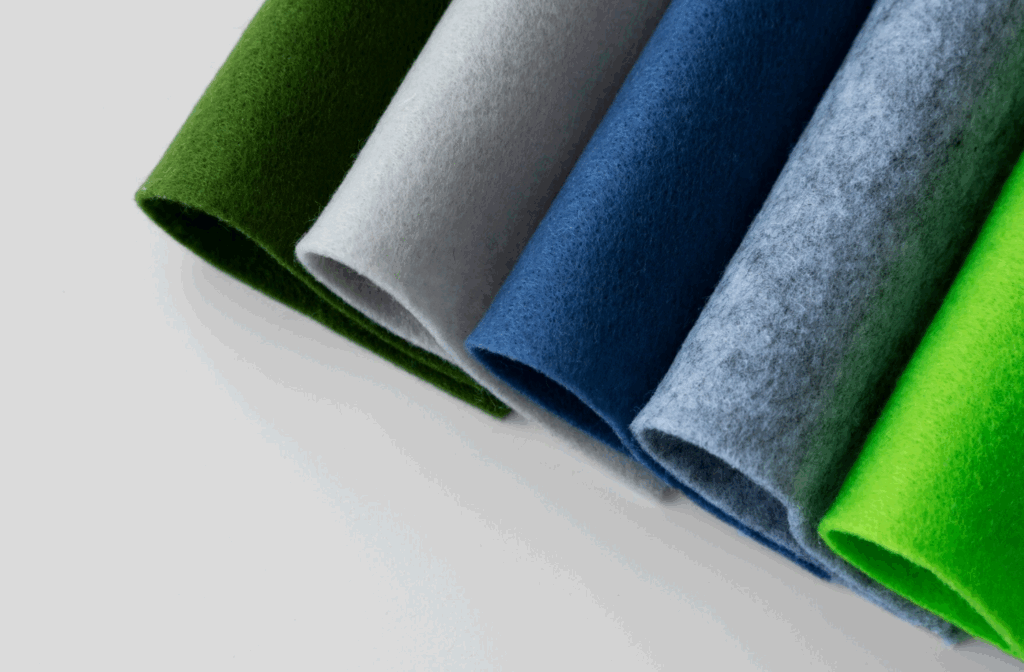
Producción de polímeros
- Nylon se crea mediante la polimerización de compuestos como el ácido adípico y la hexametilendiamina, dando lugar a fibras de nailon 6 o nailon 66 con propiedades estables y resistentes a la abrasión.
- Poliéster (PET) se produce por policondensación de ácido tereftálico purificado (PTA) o tereftalato de dimetilo (DMT) con etilenglicol (MEG), y luego se extruye en gránulos antes de hilarlos.
- Olefina (polipropileno) se polimeriza de forma similar en resina peletizada lista para la creación de fibras.
Hilado y texturizado de fibras
- Los gránulos se funden y extruden a través de hileras, formando finos filamentos que se enfrían y solidifican.
- Estos filamentos continuos, también llamados filamentos continuos abultados (BCF), se texturizan -a menudo mediante calor- para que adquieran volumen y un tacto más parecido al de una moqueta.
Termofijación del hilo
Para fijar la forma y la estabilidad de la fibra, el hilo se somete a termoendurecible-generalmente con vapor sobrecalentado-, lo que le confiere estabilidad dimensional, volumen y elasticidad.
Tufting de la pila
- Tufting es el proceso central: las máquinas empujan el hilo a través de un respaldo primario (generalmente polipropileno tejido) utilizando cientos o miles de agujas.
- Los bucles de hilo creados pueden permanecer en bucle (pelo en bucle) o esquilarse para formar una alfombra de pelo cortado afelpado.
- Los sensores garantizan una altura uniforme de la pila, mientras que las cuchillas recortan los bucles a los niveles deseados.
Teñido y coloreado
El color de la moqueta puede añadirse antes de tufting (teñido en disolución del hilo, que garantiza un color intenso y duradero), o después de tufting mediante tintura discontinua o continua del rollo de moqueta.
Aplicación de respaldo
Se aplica una capa de adhesivo de látex en la parte posterior de la moqueta para fijar las fibras. A continuación se aplica una respaldo secundarioLas láminas de fibra de vidrio, como el yute o el soporte sintético, se laminan con calor y presión, lo que aumenta su resistencia y estabilidad dimensional.
Acabado y control de calidad
- Las alfombras se esquilan y acicalan para refinar su textura.
- Pueden aplicarse tratamientos adicionales, como revestimientos antimanchas o ignífugos.
- Las inspecciones finales comprueban la uniformidad de la pila, la exactitud del color y la ausencia de defectos.
Corte y embalaje
Los rollos se recortan a anchos precisos, se etiquetan y se embalan para su envío. El resultado: una moqueta uniforme, bonita y lista para instalar.
Nuevos avances en reciclaje y sostenibilidad
- Programas de nailon reciclado como Econyl descomponen el nailon postconsumo en monómeros, lo que permite su reutilización en circuito cerrado.
- PET recicladoprocedente de botellas, se utiliza cada vez más en la fabricación de alfombras, lo que reduce el consumo de petróleo y evita que el plástico acabe en los vertederos.
7. Consideraciones medioambientales y sostenibilidad de las moquetas sintéticas
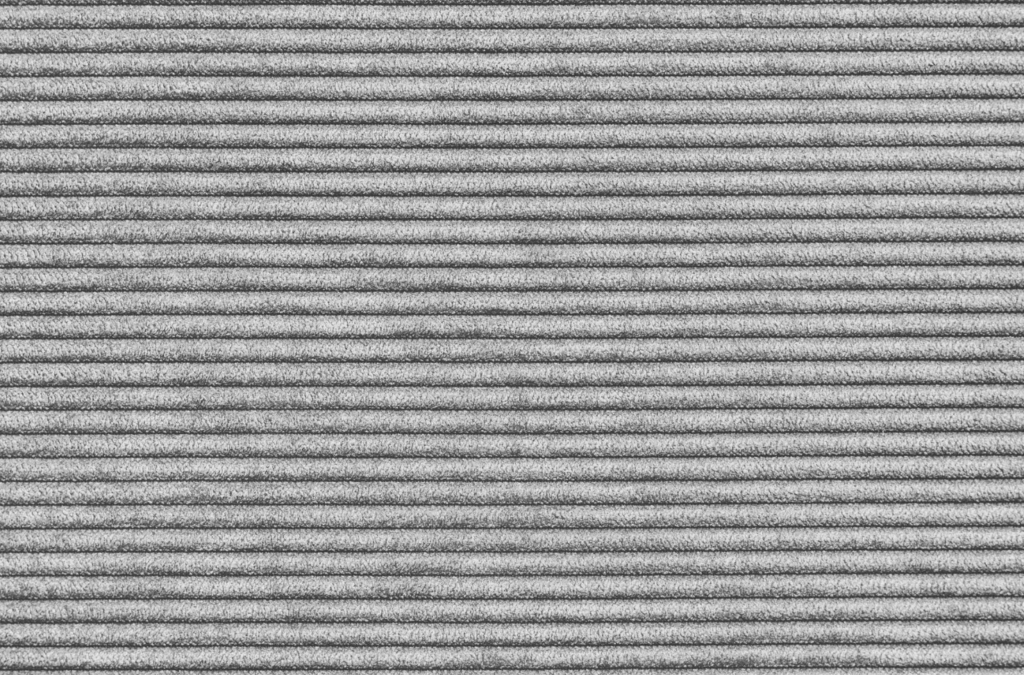
Las alfombras sintéticas plantean retos ecológicos:
- Obtención de material: Proceden de fuentes no renovables e implican la extracción de grandes cantidades de carbono.
- Consumo de energía y agua: Gran utilización en las fases de hilatura, teñido y fabricación.
- Aditivos químicos: Puede añadir COV, retardantes de llama, fungicidas y adhesivos que persisten en la eliminación.
- Eliminación y reciclado: Los vertederos estadounidenses reciben más de 4.000 millones de libras de moqueta al año; el reciclaje sigue siendo bajo, con ~9% en 2018.
- Preocupación por los microplásticos: El desgaste de las fibras contribuye a la contaminación por microplásticos.
Nuevas soluciones
- Contenido reciclado: El PET procedente de botellas de plástico o el nailon reciclado potencian la sostenibilidad.
- Polímeros de origen biológico: Triexta (Sorona) incorpora materias primas renovables.
- Etiquetas ecológicas y producción más ecológica: Algunas alfombras cumplen certificaciones como la Etiqueta Verde Plus o normas de bajo contenido en COV, además de que los fabricantes están mejorando la fabricación y el reciclado.
- Intentos circulares: Los programas se esfuerzan por reciclar en circuito cerrado; se están llevando a cabo iniciativas "de la cuna a la cuna".
8. Consejos de compra: Cómo elegir la alfombra sintética adecuada
Elegir la moqueta sintética adecuada significa encontrar el equilibrio entre rendimiento, estética y valor del ciclo de vida. He aquí una lista de comprobación exhaustiva con la orientación de expertos para agilizar la toma de decisiones:
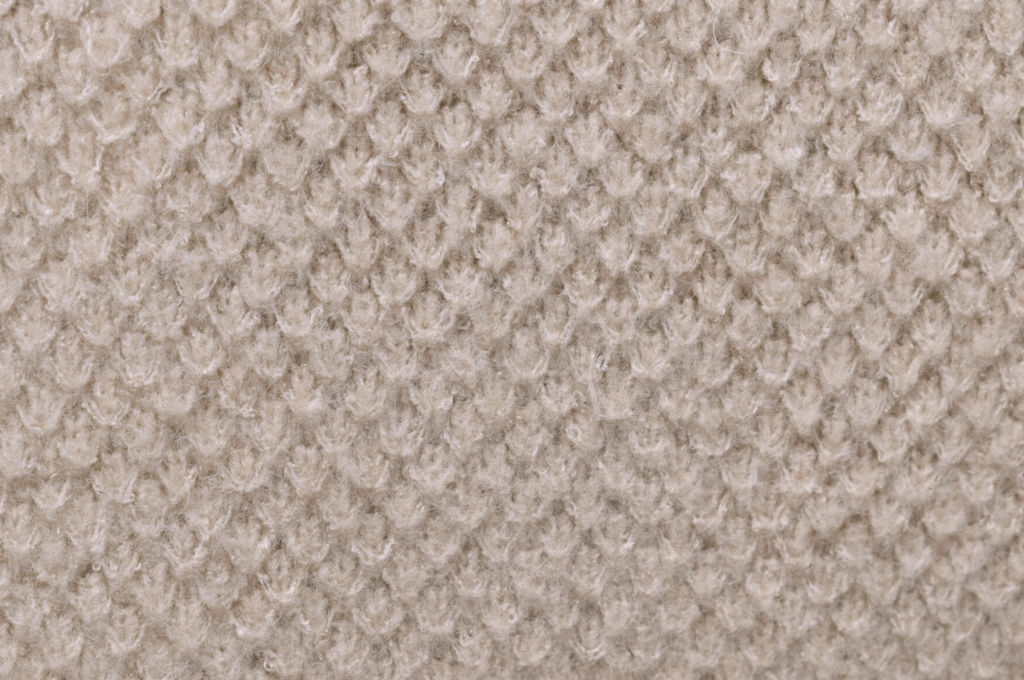
Defina la finalidad de la sala y el nivel de tráfico
- Zonas de tráfico intenso (pasillos, salones) necesitan fibras duraderas como nylon o triexta, apreciado por su resistencia a la abrasión y rebote ante el desgaste.
- Espacios húmedos o semiexteriores (sótanos, kits) favor olefina gracias a su resistencia a la humedad y al moho.
- Zonas poco transitadas (habitación de invitados, estudio) pueden ser suaves pero económicas. poliéster...dando más importancia a la comodidad que a la durabilidad.
Priorizar la resistencia a las manchas y la facilidad de limpieza
- Elija fibras teñidas en disolución (olefina, poliéster) para un color duradero y una resistencia excepcional a la mayoría de las manchas líquidas.
- Para hogares con niños o mascotas, triexta proporciona protección integrada contra las manchas sin necesidad de recubrimientos químicos.
- Nylon funciona bien en zonas muy transitadas, pero brilla cuando se trata en fábrica con protector antimanchas (por ejemplo, Scotchgard).
Evaluar el tipo y la textura del pilote
- Pilas de bucles (p. ej., bereber) resisten el deslizamiento y ocultan la suciedad: ideal para zonas concurridas.
- Pilas cortadas (sajonia, friso) ofrecen sensación de felpa pero pueden mostrar huellas y requieren construcciones más densas en zonas más concurridas.
- Opciones de textura como el friso o el corte y bucle combinan suavidad con rendimiento y capacidad de camuflaje.
Tenga en cuenta el peso y la densidad de la moqueta: no confíe sólo en el peso
- Peso facial por sí solo no es un indicador fiable; hay que centrarse en densidad del pelo, torsión de la fibray la calidad del respaldo.
- Una alfombra más ligera pero con un mechón más apretado suele superar a otras alternativas más pesadas pero más sueltas.
Elija el acolchado adecuado
- Una calidad alfombrilla aumenta el confort, la resistencia y la vida útil, lo que supone una inversión mayor que el peso nominal de la moqueta.
- Las zonas de tráfico intenso se benefician de almohadillas más densas y firmesmientras que las almohadillas más blandas son adecuadas para dormitorios y salones.
Instalación y garantía
- Instalación profesional garantiza un estiramiento adecuado, costuras limpias y anclaje. Los errores en esta fase pueden reducir drásticamente el rendimiento.
- Las garantías varíannylon y triexta suelen ofrecer garantías más sólidas. Revise los términos-incluyendo cerraduras en particular acolchado o mantenimiento de limpieza.
Equilibrio entre estética y tendencias de diseño
- Vaya más allá del beige: las influencias de Disney demuestran que las alfombras de colores están cada vez más de moda.
- Para ocultar piedrecitas, pelos de mascotas o huellas de pisadas, considere las alfombras estampadas: los tonos oscuros y los estampados sutiles son los que mejor funcionan.
Compre con inteligencia: Compare varias estimaciones
- Obtenga presupuestos de minoristas, grandes almacenes y distribuidores en línea, pero garantizar que las comparaciones sean comparables (fibra, densidad, almohadilla, método de instalación).
- A menudo, ahorrará más ajustando la calidad del acolchado o prestando atención a las promociones (por ejemplo, rollos de selección de almacén o precios de vacaciones).
9. Guía de mantenimiento y cuidado de Alfombras sintéticas
Una alfombra sintética puede lucir bonita durante años, si la trata bien. Con la rutina adecuada, las reparaciones oportunas y la limpieza profunda ocasional, preservará la comodidad y el color de su alfombra al tiempo que protege su inversión.
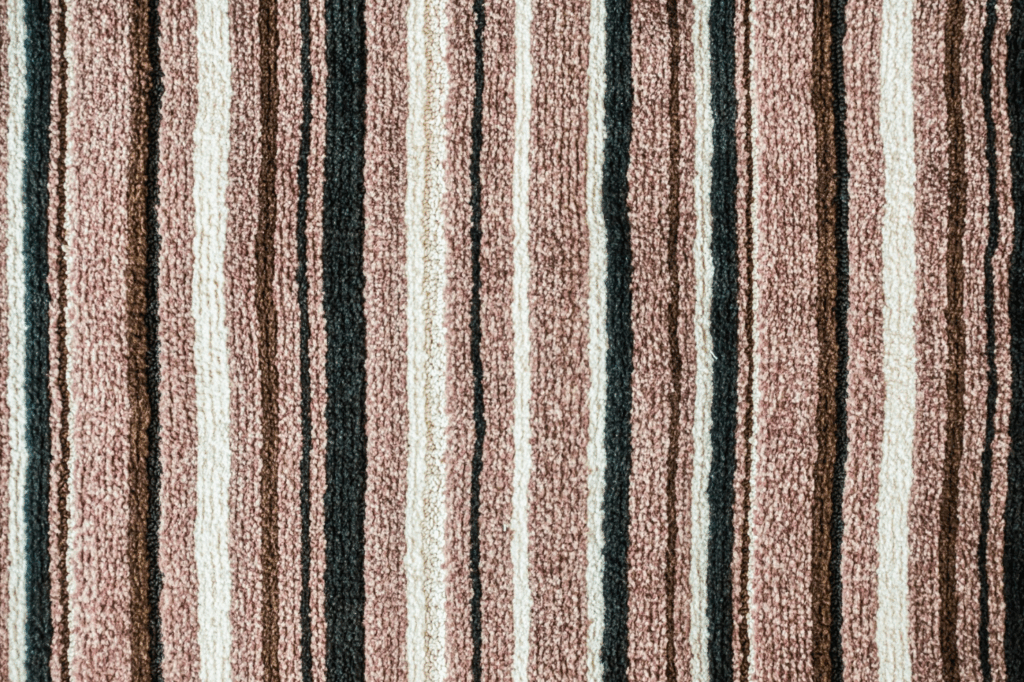
Aspirar con regularidad: La base de la limpieza
- Aspirar las zonas muy transitadas en días alternosy las zonas menos utilizadas al menos una vez a la semana. Para hogares especialmente activos (niños/mascotas), aspire de 8 a 12 pasadas en cada sección para obtener mejores resultados.
- Utilice un aspiradora de bidón sólo aspiración o ponga la barra batidora alta para reducir el daño a las fibras.
- Para capturar la suciedad profunda, aspirar ambos lados de alfombras de vez en cuando.
Afronte los derrames de forma inmediata y cuidadosa
- Secar, no frotar. Absorba los derrames con una toalla de papel limpia o un paño blanco para evitar que la mancha se incruste.
- Siga secando hasta que no quede líquido.
- Para las manchas a base de agua, utilice un Mezcla 1:1 de vinagre blanco y aguaPulverizar suavemente, esperar 15 minutos y volver a secar.
- Para las manchas de grasa o aceite, utilice un limpiador específico para grasa-Evite los detergentes de uso general.
Estrategias de limpieza a fondo: Del bricolaje al profesional
- Anual (o 12-18 meses) se recomienda la extracción profesional con agua caliente (limpieza con vapor) para una higiene óptima.
- Los métodos de bricolaje con agua caliente también funcionan: basta con aclarar bien para eliminar todos los residuos.
- Para un refresco rápido y una hidratación mínima, limpieza en seco o con muy baja humedad (sistemas de encapsulación/compuesto seco) son eficientes y compatibles con LEED.
- Tratamiento localizado entre limpiezas profundas utilizando jabón suave para vajilla, bicarbonato sódicoo soda de club, siempre pruebe primero en una zona poco visible.
Rotación y cuidado para evitar el desgaste
- Rotar las alfombras periódicamente para igualar el desgaste y la decoloración.
- Utilice alfombrillas o posavasos para reducir el aplastamiento localizado y la tensión.
Evitar problemas de humedad
- Evite mojar demasiado la alfombra.la humedad y el calor pueden provocar moho.
- En zonas propensas a la humedad (por ejemplo, sótanos), utilice alfombras de olefina y garantizar secado rápido con ventiladores o ventanas abiertas.
Consejos y buenas prácticas de Vertex
| Consejo | Por qué es importante |
| Zonas sin calzado + alfombrillas | Reduce la suciedad arrastrada y prolonga los ciclos de aspiración |
| Elija fibra teñida en masa que no destiña | Garantiza que el color penetre completamente y resista la decoloración |
| Atención inmediata a los derrames de líquidos calientes | Reduce las manchas permanentes, especialmente en caso de accidentes de mascotas |
| Tratamiento antiestático | Ayuda a reducir la adherencia en fibras de alta estática como el nailon |
| Secar bien después de limpiar | Evita el moho, los olores y los problemas de apilamiento |
Manchas grasas o incrustadas
- Para manchas aceitosas o grasientas, utilice productos quitamanchasSiga atentamente las instrucciones.
- Para las manchas de orina o de animales domésticos, una solución diluida de limpiador enzimático es eficaz, basta con secar la zona con peso y presionar para secarla.
Control de olores y alérgenos
- Vacío regularmente para reducir los ácaros del polvo y los alérgenos.
- Espolvorear bicarbonato sódicoDéjelo reposar y, a continuación, aspire para absorber los olores.
- Para olores persistentes (orina de mascotas), utilice desodorizantes enzimáticos-evitar saturar el relleno.
Cuándo llamar a los profesionales
- Contrate a profesionales cuando Los métodos de bricolaje fallanpara manchas persistentes o para limpiezas en profundidad anuales.
- Prefiera limpiadores con certificación ecológica expertos en fibras sintéticas: busque servicios de encapsulación o procesos de limpieza en seco.
10. Alfombras sintéticas frente a naturales: Cómo elegir la adecuada
Elegir entre moquetas sintéticas y naturales se reduce a las prioridades: rendimiento, comodidad, presupuesto o sostenibilidad. He aquí una comparación en profundidad para ayudarle a tomar la decisión que mejor se adapte a su estilo de vida.
| Aspecto | Sintético | Natural |
| Coste | Bajo-Medio | Alta |
| Durabilidad | Nylon y triexta excel | Lana duradera pero más cara |
| Resistencia a las manchas | Alta (olefina, triexta) | Moderado (la lana necesita sellado) |
| Confort | Bueno (triexta) | Excelente suavidad natural |
| Hipoalergénico | Sí, menos atracción de polvo | La lana puede albergar ácaros |
| Impacto ecológico | Huella elevada; mejora el reciclado | Renovable, biodegradable |
| Siéntase | Textura sintética | Lujoso tacto natural |
11. Conclusión
Resumiendo: alfombras sintéticas-fabricadas principalmente con nailon, poliéster, olefina y triexta- ofrecen ventajas convincentes: asequibles, orientadas al rendimiento y versátiles. Destacan en las zonas de mayor desgaste o riesgo de manchas, y los materiales más nuevos, como la triexta, incluso aportan sostenibilidad.
Sin embargo, las consideraciones medioambientales son reales. A la hora de comprar, tenga en cuenta los programas de reciclaje, los polímeros de origen biológico y las certificaciones acreditadas. Con el cuidado y la perspicacia adecuados, una alfombra sintética bien elegida puede ser muy útil y, al mismo tiempo, ajustarse a las necesidades prácticas de su estilo de vida.
12. Preguntas frecuentes
1. ¿Son seguras las moquetas sintéticas para la calidad del aire interior?
En general, sí, pero elija tipos con bajo contenido en COV y asegúrese de que se ventilan correctamente para minimizar la emisión de gases.
2. ¿Las alfombras sintéticas provocan alergias?
Son hipoalergénicos y resistentes a los ácaros del polvo. Pero la limpieza regular sigue siendo esencial.
3. ¿Se pueden reciclar las alfombras sintéticas?
Los índices de reciclado son actualmente bajos (~9%), pero existen opciones de PET y nailon reciclados, y algunos fabricantes ofrecen programas de recogida.
4. ¿Qué fibra es mejor para los hogares de mascotas?
La triexta o el nailon teñido en masa, duraderos, resistentes a las manchas y fáciles de limpiar, son excelentes opciones para mascotas.
5. ¿Cuánto duran las moquetas sintéticas?
Dependiendo de la fibra y del mantenimiento, puede durar entre 7 y 15 años. El nailon y la triexta, con cuidados, pueden durar más de 10-15 años.

